India & World UpdatesAnalyticsFeature Story
Drug Repurposing- the only hope for COVID-19 treatment, writes S. Baishya & M. Dutta Choudhury

= Somorita Baishya1, Manabendra Dutta Choudhury1*
1Department of Life Science and Bioinformatics, Assam University, Silchar
April 4: Abstract: Repurposing de-risked drugs has shown promising instances in treating diseases at different point of time. Besides cutting down the time, cost and labors incurred in de novo drug synthesis, it also provides platform to explore novel activities of a drug. In this hour of tumult due to the pandemic caused by COVID-19 repurposing existing drugs stands as a validated solution. The treatment which is in use at this moment for COVID-19 i.e treatment by Hydroxychloroquine (C18H26ClN3O) is just a repurposing technique. Similarly approval by FDA for use of Remdesivir (C27H35N6O8P) in the treatment of COVID-19 is also a drug repurposing. The existing antiviral drugs target the various stages of viral replication and might be explored to combat COVID-19. But the challenge here is that most of the viral replication machinery targeted antiviral compounds are pro drugs. They need proper metabolism with the help of the pathogen only. We do not know if 0.1% genome variation that has occurred in COVID-19 from SRAS due to mutation has prevented this causal agent to help the pro drugs in their conversion to drugs.
Keywords: Drug repurposing, diseases, COVID-19
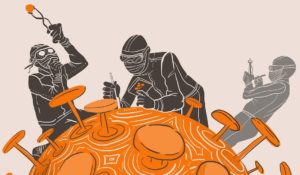 Introduction: Biomedical science is in an exciting stage due to the advancements in science (Weatherall, Greenwood, Chee, & Wasi, 2006). Prospects of understanding diseases have become better because of expansion in molecular biology, bioinformatics, immunology, omics-science etc. However, in contrary, innovation in terms of drug development has been lesser as compared to investments made. This is mainly due to high competition in new market opportunities, increase in research success bar due to non-availability of targets that are easy to test and research and development (R&D) complexity associated with new research projects, (Pammolli, Magazzini, & Riccaboni, 2011). All these factors along with challenges from generic drugs and increasing hurdles from drug regulatory affair bench have slowed down the translation of technological advancements, we are witnessing at the moment, into novel drug discoveries. Hence, emerged the concept of drug repurposing (Ashburn & Thor, 2004; Pushpakom et al., 2019). The drug developers used the concept of polypharmacology to improvise the activity of existing drugs (A. P. Kumar, Lukman, & Nguyen, 2019).
Introduction: Biomedical science is in an exciting stage due to the advancements in science (Weatherall, Greenwood, Chee, & Wasi, 2006). Prospects of understanding diseases have become better because of expansion in molecular biology, bioinformatics, immunology, omics-science etc. However, in contrary, innovation in terms of drug development has been lesser as compared to investments made. This is mainly due to high competition in new market opportunities, increase in research success bar due to non-availability of targets that are easy to test and research and development (R&D) complexity associated with new research projects, (Pammolli, Magazzini, & Riccaboni, 2011). All these factors along with challenges from generic drugs and increasing hurdles from drug regulatory affair bench have slowed down the translation of technological advancements, we are witnessing at the moment, into novel drug discoveries. Hence, emerged the concept of drug repurposing (Ashburn & Thor, 2004; Pushpakom et al., 2019). The drug developers used the concept of polypharmacology to improvise the activity of existing drugs (A. P. Kumar, Lukman, & Nguyen, 2019).
The strategy of drug repurposing is also known as drug repositioning, or drug reprofiling, or drug re-tasking. Here, medical uses of existing, approved and investigational drugs beyond their original scope of medications are looked for (Ashburn & Thor, 2004; Pushpakom et al., 2019; Talevi & Bellera, 2020). In other words, the active compound of a drug is redeveloped for use in another disease (Talevi & Bellera, 2020).
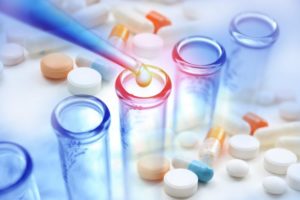 Need of drug repurposing: Drug repurposing is advantageous over traditional drug discovery because, firstly, it reduces the cost and time spend in developing a new drug, secondly, it negates the necessity of preclinical and phase I and II clinical trials as there is no risk failure because their safety demonstration in humans are already done (Talevi & Bellera, 2020). Repurposed drugs are also involved in revealing newer disease pathways and disease targets. All these factors pose a repurposed drug as less risky drug candidate and also promises high return of investment (Pushpakom et al., 2019).
Need of drug repurposing: Drug repurposing is advantageous over traditional drug discovery because, firstly, it reduces the cost and time spend in developing a new drug, secondly, it negates the necessity of preclinical and phase I and II clinical trials as there is no risk failure because their safety demonstration in humans are already done (Talevi & Bellera, 2020). Repurposed drugs are also involved in revealing newer disease pathways and disease targets. All these factors pose a repurposed drug as less risky drug candidate and also promises high return of investment (Pushpakom et al., 2019).
Success stories of drug repurposing: Novel, serendipitous, informed and retrospective observations and use of technological platforms paves way for rediscovering a new position for an already established drug (Ashburn & Thor, 2004). A few examples showing such rediscoveries of already established drugs are cited below:
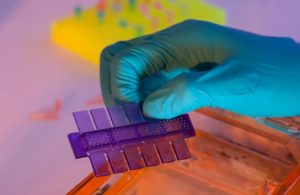 Serendipitous use of thalidomide: After the tragic failure of use of thalidomide in treating morning sickness, it fortuitously ushered as treatment for erythema nodosum laprosum (ENL), an inflammatory condition characterized by large, persistent, painful boils and inflammation severe enough to cause blindness in leprosy patients. Thalidomide helped the patients to sleep, healed the sores, eliminated pain and in less than two weeks complete remission was seen. In 1998, thalidomide was marketed as Thalomid for treating ENL and set a classic example that drug repurposing might open up newer possibilities for a drug (Ashburn & Thor, 2004).
Serendipitous use of thalidomide: After the tragic failure of use of thalidomide in treating morning sickness, it fortuitously ushered as treatment for erythema nodosum laprosum (ENL), an inflammatory condition characterized by large, persistent, painful boils and inflammation severe enough to cause blindness in leprosy patients. Thalidomide helped the patients to sleep, healed the sores, eliminated pain and in less than two weeks complete remission was seen. In 1998, thalidomide was marketed as Thalomid for treating ENL and set a classic example that drug repurposing might open up newer possibilities for a drug (Ashburn & Thor, 2004).
SSRI to treat premature ejaculation: Dapoxetine, a selective serotonin-reuptake inhibitor (SSRI), developed as adjunct to analgesic and later used as follow-on antidepressant. However, its short half life and rapid onset made the compound unfit as antidepressant. Moreover, it delayed ejaculation in men as side effect. These pharmacokinetic characteristics were considered must for proposing dapoxetine as medicine for pre-mature ejaculation in men. Now, dapoxetine is marketed for treating pre-mature ejaculation (Ashburn & Thor, 2004).
 Using antidepressant as a medicine for SUI: Duloxetine was produced as a medication to treat depression by blocking the reuptake of serotonin and noradrenaline in the synaptic clefts. Although these two hormones regulate mood of a person, they also have excitatory effects on motor neurons of urethral sphincter. They can increase urethral resistance and prevent urine leakage. Supportive evidences from preclinical studies confirmed that duloxetine might be used for treatment of stress urinary incontinence (SUI) along with depression. SUI is a condition where upon increase in pressure in intra-abdominal region during sneezing, laughing or coughing urine is leaked. Clinical trials also showed congruency to the hypothesis and hence duloxetine was developed for treating both depression and SUI (Ashburn & Thor, 2004).
Using antidepressant as a medicine for SUI: Duloxetine was produced as a medication to treat depression by blocking the reuptake of serotonin and noradrenaline in the synaptic clefts. Although these two hormones regulate mood of a person, they also have excitatory effects on motor neurons of urethral sphincter. They can increase urethral resistance and prevent urine leakage. Supportive evidences from preclinical studies confirmed that duloxetine might be used for treatment of stress urinary incontinence (SUI) along with depression. SUI is a condition where upon increase in pressure in intra-abdominal region during sneezing, laughing or coughing urine is leaked. Clinical trials also showed congruency to the hypothesis and hence duloxetine was developed for treating both depression and SUI (Ashburn & Thor, 2004).
Futile angina drug treating impotency: Sildenafil was initially developed to treat hypertension and angina. Desired cardiovascular activity of the drug was not reported in the clinical trials, but volunteers reported longer penile erection and based on retrospection, trial on impotent men was performed. Sildenafil showed its effectiveness in holding erection. Hence, sildenafil which is marketed as Viagra is used for treating erectile dysfunction in men and stands as the most successful case of drug repurposing (Ashburn & Thor, 2004; A. P. Kumar et al., 2019).
 Anti-malaria drug treating Rheumatoid Arthritis: Hydroxychloroquine is derived from quinine and cinchonine which were originally isolated from the bark of the cinchona tree found in Peru. For a quiet long period the drug had been used to treat malaria only but now successfully repurposed as a disease-modifying anti-rheumatic drug (DMARD) for adults with Rheumatoid Arthritis . (O’Dell et al 2013, Negrei et al 2016).
Anti-malaria drug treating Rheumatoid Arthritis: Hydroxychloroquine is derived from quinine and cinchonine which were originally isolated from the bark of the cinchona tree found in Peru. For a quiet long period the drug had been used to treat malaria only but now successfully repurposed as a disease-modifying anti-rheumatic drug (DMARD) for adults with Rheumatoid Arthritis . (O’Dell et al 2013, Negrei et al 2016).
Challenges in drug repurposing: As discernable is the success of drug repurposing, failures mostly at 3rd stage of clinical trials is also seen (Pushpakom et al., 2019). A few of the major contributors that pose as challenge to drug repurposing are discussed below:
Consideration of intellectual property (IP): Legal issues pertaining to IP and patent are one of the major attributors for curtailed interest in drug repurposing. As the repositioned drug is already known, therefore, existing art might hinder novelty and non-obviousness of the drug, thus affecting the patenting procedures. Moreover, if the IP of the drug is held by company legal procedures concerning license receipt must be done. In case, the drug is off-patent i.e. generic, patentee need to submit new method-of-use (MOU) for the repurposed drug. Also, new formulations or drug dosages or combination drugs also sometimes constitute new IP (Ashburn & Thor, 2004; Pushpakom et al., 2019; Talevi & Bellera, 2020).
 Considerations from drug regulatory affairs: Differences in the benefits received by repurposed drugs in US and EU stands as set back in developing repurposed drugs (Pushpakom et al., 2019).
Considerations from drug regulatory affairs: Differences in the benefits received by repurposed drugs in US and EU stands as set back in developing repurposed drugs (Pushpakom et al., 2019).
Organisational barrier: Drug repurposing requires lot of support from R&D sector pharmaceutical industries. However, if the disease for which drug is to be repurposed does not ally with companies’ core area or ‘live project’ then such projects might be dispelled (Pushpakom et al., 2019; Talevi & Bellera, 2020).
Data Availability: Open sources serve as large grounds of data and information. However, all data cannot be considered for analysis as they are not standardized. Moreover, pharmaceutical companies too are reluctant to release the chemical libraries of drugs. All these contribute in limitation of availability of drugs for repurposing (Talevi & Bellera, 2020).
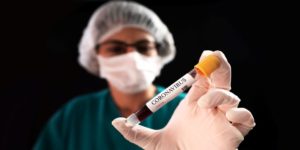 Why drug repurposing is the only hope in case of COVID-19?
Why drug repurposing is the only hope in case of COVID-19?
Global outbreak of novel corona virus, COVID-19 has tremendously affected the morbidity and mortality rate worldwide. The tragic situation is more horrifying as no drugs are available to treat this positive sense RNA virus (S. Kumar, 2020). Therefore, designing a drug or vaccine for COVID-19 is the need of the hour. However, due to various constraints involved with newer drugs or vaccine development, repurposing drugs poses to the best possible solution (Senanayake, 2020).
According to a statement published in Drug Discovery Today in 1997, time required for a new molecule to appear in market as drug is 15-25 years. With the help of Computational Biology approach though recently this time span is claimed to be reduced, there remains only little success stories except some anti HIV drugs marketed by Abbott. Even then the time required for new drug discovery is never less than five years. For a fastest spreading pandemic disease like COVID-19 no one can wait for such a long time for a new molecule to treat the disease. In such a case, we need to look for some existing molecules already approved by WHO.
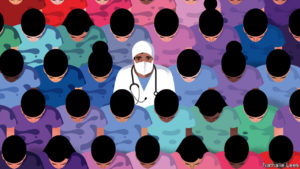 The treatment which is in use at this moment for COVID-19 i.e treatment by Hydroxychloroquine (C18H26ClN3O) is just a repurposing technique. Similarly approval by FDA for use of Remdesivir (C27H35N6O8P) in the treatment of COVID-19 is also a drug repurposing . Remdesivir was developed by Gilead Sciences for the treatment of Ebola virus disease and Marburg virus infections. It acts as adenosine analogue and helps in premature termination of RNA chain. ( Warren et al 2016). Later on the same compound was found effective against some other single stranded RNA viruses like respiratory syncytial virus, Junin virus, Lassa fever virus, Nipah virus, Hendra virus, and the corona viruses (MERS and SARS ) (Agostini et al. 2018; Sheahan et al 2017; Lo et al 2017).
The treatment which is in use at this moment for COVID-19 i.e treatment by Hydroxychloroquine (C18H26ClN3O) is just a repurposing technique. Similarly approval by FDA for use of Remdesivir (C27H35N6O8P) in the treatment of COVID-19 is also a drug repurposing . Remdesivir was developed by Gilead Sciences for the treatment of Ebola virus disease and Marburg virus infections. It acts as adenosine analogue and helps in premature termination of RNA chain. ( Warren et al 2016). Later on the same compound was found effective against some other single stranded RNA viruses like respiratory syncytial virus, Junin virus, Lassa fever virus, Nipah virus, Hendra virus, and the corona viruses (MERS and SARS ) (Agostini et al. 2018; Sheahan et al 2017; Lo et al 2017).
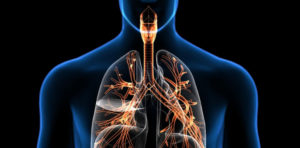 Employment of various approaches like signature matching, genome-wide association studies, computational molecular docking, pathway‑based or network‑based mapping, phenotype screens, retrospective analysis of electronic health records can be helpful in deciphering new pathways and targets of the existing drugs (Pushpakom et al., 2019). These methods will provide a new platform to the drugs that have already cleared phase I and II clinical trials to interact in virus- human network (Zhou et al., 2020). The existing antiviral agents mostly target the viral replication machinery and hence, in this context, they could be considered as good candidates for drug repurposing for COVID-19 (Senanayake, 2020). But the challenge here is that most of the viral replication machinery targeted antiviral compounds are pro drugs. They need proper metabolism with the help of the pathogen only. We do not know if 0.1% genome variation that has occurred in COVID-19 from SRAS due to mutation has prevented this causal agent to help the pro drugs in their conversion to drugs.
Employment of various approaches like signature matching, genome-wide association studies, computational molecular docking, pathway‑based or network‑based mapping, phenotype screens, retrospective analysis of electronic health records can be helpful in deciphering new pathways and targets of the existing drugs (Pushpakom et al., 2019). These methods will provide a new platform to the drugs that have already cleared phase I and II clinical trials to interact in virus- human network (Zhou et al., 2020). The existing antiviral agents mostly target the viral replication machinery and hence, in this context, they could be considered as good candidates for drug repurposing for COVID-19 (Senanayake, 2020). But the challenge here is that most of the viral replication machinery targeted antiviral compounds are pro drugs. They need proper metabolism with the help of the pathogen only. We do not know if 0.1% genome variation that has occurred in COVID-19 from SRAS due to mutation has prevented this causal agent to help the pro drugs in their conversion to drugs.
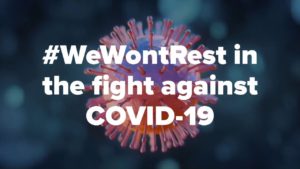
References:
- Agostini ML, Andres EL, Sims AC, Graham RL, Sheahan TP, Lu X, et al. (March 2018). “Coronavirus Susceptibility to the Antiviral Remdesivir (GS-5734) Is Mediated by the Viral Polymerase and the Proofreading Exoribonuclease”. mBio. 9 (2). doi:10.1128/mBio.00221-18. PMC 5844999. PMID 29511076
- Ashburn, T. T., & Thor, K. B. (2004). Drug repositioning: identifying and developing new uses for existing drugs. Nature reviews Drug discovery, 3(8), 673-683.
- Carolina Negrei, Violeta Bojinca, Andra Balanescu, et al. Management of rheumatoid arthritis: Impact and risks of various therapeutic approaches. Exp Ther Med. 2016 Apr; 11(4): 1177–1183. Published online 2016 Feb 2. doi: 10.3892/etm.2016.3045.
- Kumar, A. P., Lukman, S., & Nguyen, M. N. (2019). Drug Repurposing and Multi-Target Therapies.
- Kumar, S. (2020). COVID-19: A Drug Repurposing and Biomarker Identification by Using Comprehensive Gene-Disease Associations through Protein-Protein Interaction Network Analysis.
- Lo MK, Jordan R, Arvey A, Sudhamsu J, Shrivastava-Ranjan P, Hotard AL, et al. (March 2017). “GS-5734 and its parent nucleoside analog inhibit Filo-, Pneumo-, and Paramyxoviruses”. Scientific Reports. 7 (1): 43395. Bibcode:2017NatSR…743395L. doi:10.1038/srep43395. PMC 5338263. PMID 28262699.
- O’Dell JR, Mikuls TR, Taylor TH, et al. Therapies for active rheumatoid arthritis after methotrexate failure. N Engl J Med 2013;[published online]:1-12.
- Pammolli, F., Magazzini, L., & Riccaboni, M. (2011). The productivity crisis in pharmaceutical R&D. Nature reviews Drug discovery, 10(6), 428-438.
- Pushpakom, S., Iorio, F., Eyers, P. A., Escott, K. J., Hopper, S., Wells, A., . . . McNamee, C. (2019). Drug repurposing: progress, challenges and recommendations. Nature reviews Drug discovery, 18(1), 41-58.
- Senanayake, S. L. (2020). Drug repurposing strategies for COVID-19: Future Science.
- Sheahan TP, Sims AC, Graham RL, Menachery VD, Gralinski LE, Case JB, et al. (June 2017). “Broad-spectrum antiviral GS-5734 inhibits both epidemic and zoonotic coronaviruses”. Science Translational Medicine. 9 (396): eaal3653. doi:10.1126/scitranslmed.aal3653. PMC 5567817. PMID 28659436.
- Talevi, A., & Bellera, C. L. (2020). Challenges and opportunities with drug repurposing: finding strategies to find alternative uses of therapeutics: Taylor & Francis.
- Weatherall, D., Greenwood, B., Chee, H. L., & Wasi, P. (2006). Science and technology for disease control: past, present, and future. Disease control priorities in developing countries, 2, 119-138.
- Warren TK, Jordan R, Lo MK, Ray AS, Mackman RL, Soloveva V, et al. (March 2016). “Therapeutic efficacy of the small molecule GS-5734 against Ebola virus in rhesus monkeys”. Nature. 531 (7594): 381–5. Bibcode:2016Natur.531..381W. doi:10.1038/nature17180. PMC 5551389. PMID 26934220.
- Zhou, Y., Hou, Y., Shen, J., Huang, Y., Martin, W., & Cheng, F. (2020). Network-based drug repurposing for novel coronavirus 2019-nCoV/SARS-CoV-2. Cell Discovery, 6(1), 1-18.




